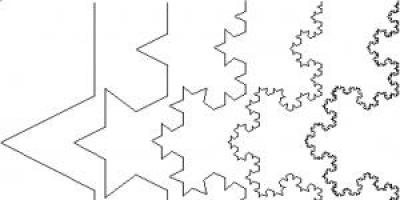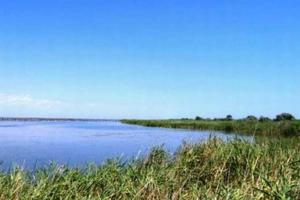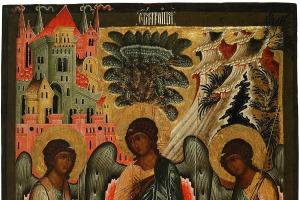Japanese pine is often used in bonsai, but it is also planted on garden plots. We will talk about the features of its cultivation and maintenance in this article.
The tree has a beautiful pine shade.
Japanese white pine (Pinus parviflora) grows naturally in Japan and Kuril Islands. The tree grows up to 20 m in height, has a long cone-shaped crown and dark green needles, silvery on the underside. In our latitudes it is found in parks on the Black Sea coast of the Caucasus.
The pine blooms in May, after which oval cones 8-12 cm long form on the branches. They last up to 7 years, and mature in 2-3 years. The tree is resistant to urban conditions and polluted environments, and can withstand frosts up to 34 degrees. Lifespan pine beauty is 150-200 years.
There are both single-stem and multi-stem species. Japanese white pine has a smooth bark that becomes scaly over time. Young shoots are greenish in color and become blue-gray over time. The needles are soft and thin, curved at the ends.
Varieties of Japanese pine
Small-flowered Japanese pine occurs different varieties. There are about fifty of them in total. Among the most interesting and common are:

Growing conditions
The natural species can be planted in areas where in winter temperatures do not drop below 28 degrees, but artificially bred varieties are suitable for growing in colder conditions.
Temperature and lighting
For any variety of Japanese pine, both scorching sun and shade are suitable. The tree grows equally well in different light conditions. If pine were more frost-resistant, it would be classified as a universal coniferous plant. However, restrictions on temperature conditions There is. in winter natural look tolerates temperatures down to -24 -28°C, other varieties - up to -34°C. In summer, pine is suitable for any climatic conditions of the region.
The soil
Japanese white pine grows well in any soil. However, it prefers moist, well-drained soils. This can be achieved by adding to the soil broken brick or expanded clay before planting. The tree is resistant to salinity. Thanks to such unpretentiousness, these pine varieties are recommended for cultivation in rocky, heather, and Japanese gardens.
Disembarkation
Pine is planted from late April to mid-September. This time is optimal for adaptation of the root system. The best seedlings are those that have reached 3-5 years of age.

Japanese pine seedling.
IN landing hole at a depth of 1 m, add complex or nitrogen fertilizer. For backfilling, prepare a mixture of topsoil, turf soil, clay or river sand in a ratio of 2:2:1. When disembarking between small trees leave a distance of 1.5 m, and large ones - 4 m. Pine is planted together with a lump of earth.
Humidity and watering
The tree is watered for the first time immediately after planting. In the future, they look at the weather: the brighter the sun shines, the more moisture the plant needs, but on average, young seedlings are watered once a week, although sparingly. Japanese pine is sensitive to moisture deficiency, so in hot weather it is necessary to organize additional watering.
In the spring and summer, sprinkling should be carried out and the needles should be washed. The procedure is repeated morning and evening. During the first year of the seedling's life, sprinkling is carried out every other day. In this way, dirt and dust are washed off from the needles.
Top dressing
Coniferous trees do not need feeding as much as deciduous trees. But young pine seedlings need fertilizers during the first two years after planting. A complex mixture is added to the under-barrel circle 1-2 times a year. mineral fertilizer based on 40 g per square meter. m. area. An adult pine tree will have enough useful elements accumulated in fallen needles.
Trimming and pinching
It is constantly necessary to remove diseased, dry, damaged branches. Pruning is carried out once a year in the spring, after the appearance of young shoots. Pine buds are just growing young shoots.
To form the pine crown of the desired shape, you need to pinch these buds. The tree will branch. The more the bud is shortened, the more the tree's growth is inhibited. So, if you need a miniature pine, shorten the buds by 2/3.

For branching, pinch out the awakened buds.
Wintering
For the winter, young seedlings must be covered so that they can better survive frosts and not get sunburn. To do this, the root part and crown of young trees are covered with spruce branches and removed in mid-April. You can use burlap or special covers. It is not a good idea to wrap trees in dense materials that do not allow air to pass through; young pines may begin to rot.
Difficulties in growing
All types of pine trees are susceptible to attacks by certain pests and diseases. In order to detect them in time, it is necessary to regularly carry out preventive inspections of plants and eliminate problems at the inception stage.
Pine pests

Pine diseases
- Spotting of needles is accompanied by common Schutte disease. For treatment, trees are sprayed with Zineb, colloidal sulfur or Bordeaux mixture in July-September.
- In case of cancer, the needles in May acquire a red-brown tint, dry out and fall off. In summer, the shoots become covered with ulcers and begin to die. For treatment, the tree must be treated throughout the season with a solution of Fundazol or Antio (20 g per 10 liters of water). The procedure is done at the end of April, end of May, beginning of July and September. It is advisable to repeat spraying during the winter thaw.
Reproduction
Small-flowered pine propagates by seeds, grafting and cuttings.
Growing pine from seeds
Seeds can be collected from the cones once ripe. This occurs in winter, but only in the second or third year after pollination. You can tell that the seeds are ripe by the formation of a pyramidal thickening on the opened cone. This indicates that the seeds are suitable for collection.
For storage, they are placed in a glass container and placed in a cool place. Such conditions ensure seed germination when sowing next year. And some part can be planted right now. Seeds are sown directly into the ground or into containers. To speed up germination, before planting, the seeds can be placed in the refrigerator for a couple of hours and then rinsed with warm water.

Small pine trees from seeds.
Next they are sown in the ground. It should be loose, sprinkled with peat on top. Drainage holes must be made in containers. There is no need to bury the seeds, just sprinkle them on the soil and then loosen it.
An interval of 5 mm should be maintained between seeds. Immediately after planting, moisten the soil with a spray bottle and maintain moderate humidity. When the sprouts hatch, they are planted into separate containers as they grow. IN open ground When grown in containers, they can be replanted after a year.
Graft
As a rootstock (the plant to which the shoot will be attached), a 4-year-old Scots pine seedling is usually taken. The diameter of the central branch should reach 5 mm. For the scion (what will be grafted), cuttings from 1-3-year-old Japanese pine are used.
The cuttings are cut into several pieces up to 6 cm long. The needles are removed, leaving only the needles at the apical bud. It is better to carry out the procedure before the buds open, but it can also be done in the first half of July. The difference is that in the spring the scion must be attached to the shoot of the previous year, and in the summer - the current one.
The rootstock is cleared of needles at the grafting site, after which the cuts are quickly made. First on the scion at an angle of 45 degrees, then on the rootstock, parallel to the trunk. Use a sterilized sharp knife. After this, the sections on the scion and rootstock are applied to each other, pressed and wrapped with tape along the entire length.
It is better to store the scion and rootstock in greenhouse conditions. To do this, they are covered with film, creating high humidity. The winding is loosened when the scion begins to grow. And after a month it is removed completely. In winter, a splint can be applied to the grafting site to prevent the attached branch from breaking off under the weight of snow.

This is how the cut on the rootstock should be.
Cuttings
For rooting, a one-year-old twig with a heel is cut from a young pine tree. It is placed in water for several hours, and then for another 12 hours in a growth stimulator (Epin, Kornevin). After this, the cuttings are planted in a prepared substrate consisting of turf soil, sand and peat in equal quantities.
When planting, the branch is buried 5 cm. Covered with a transparent container or bag on top. The greenhouse is kept in a bright, warm place, ventilated periodically. When the seedling begins to grow, we can talk about successful rooting of the cutting.
You can buy Japanese pine seedlings in specialized nurseries. It is better to choose the one that is closer to the place where the tree is planted. The price of white pine depends on the age and size of the seedling and variety. So, small-flowered pine"Negishi" 70-80 cm high costs about 4000-6000 rubles, and a 5-year-old "Glauca" seedling can be purchased for 1000-1500 rubles.
Pine bonsai is a classic bonsai species both in Japan and around the world.
In total there are about 120 species of pine. All of them are more or less suitable for growing bonsai, but 4 types are mainly used.
The following types of pine are used to grow bonsai:
- Japanese black pine,
- Scots pine,
- Japanese white pine.
Japanese black pine
Japanese black pine is most often used due to the fact that it with the right content, has a beautiful bark, tolerates well bad conditions, does not require nutrient-rich soils.
In Japan, many self-respecting bonsai enthusiasts believe that a person cannot become a master without growing black pine bonsai. The Japanese grow black pine bonsai as a tribute to its origins. ancient art. Despite the popularity of black pine, it should be noted that if you choose this particular species, you may encounter two problems:
- The tree's needles have grown too long (wrong location, watering and fertilizing),
- Slow growth ( biological feature plants).
Black pine is well suited for growing in gardens.

Black Pine Bonsai
Black pines tolerate poor conditions well and can survive in nature on barren, rocky soils. Black pine needles are dark gray-green, 7 -15 cm long. The bark is purplish-gray in color and cracks as the tree ages and resembles rock.
Mountain pine.
 Mountain pine has a hardy nature and can withstand adverse weather conditions and temperature changes without changing the color of its needles. Mountain pine will withstand frosts and scorching summers. At proper care mountain pine will produce dense, dense butcher's broom, and bushy branches that can be pruned and shaped into different styles. young tree begins its life with a purplish hue, and when it blooms, it produces beautiful soft purple flowers.
Mountain pine has a hardy nature and can withstand adverse weather conditions and temperature changes without changing the color of its needles. Mountain pine will withstand frosts and scorching summers. At proper care mountain pine will produce dense, dense butcher's broom, and bushy branches that can be pruned and shaped into different styles. young tree begins its life with a purplish hue, and when it blooms, it produces beautiful soft purple flowers.
Mountain pine grows in Central Europe. The species itself is very diverse and botanists divide it into a number of subspecies and varieties. IN favorable conditions mountain pine forms dense dense shrubs or small trees. Mountain pine needles are paired, 2-5 cm long, dark green and slightly twisted. The pine tree blooms with purple flowers.

Mountain pine bonsai.
Scots pine

Scots pine is the easiest and most flexible species to grow bonsai. Where other pines can “be capricious and rebel,” Scots pine will obligingly take any shape and preserve it well.
Scots pine is native to Western and Northern Europe. Its needles are paired, blue-green or yellow-green, 5-7 cm long. The bark becomes scaly and red-brown with age.

Scots pine bonsai
Japanese white pine
 Japanese White Pine is unusual and has completely unique white needles. White pines are often grafted onto black pine trunks.
Japanese White Pine is unusual and has completely unique white needles. White pines are often grafted onto black pine trunks.
White pine is a conical or columnar tree, often with a spreading crown. White pine is native to Japan. White pine needles are 2-6 cm long, dark green in color with a whitish-blue inside.

Japanese white pine bonsai
Rules for caring for pine bonsai.
Location.
Whether you are growing your bonsai indoors or in your garden, you need to place the tree in a sunny location. When growing any type of pine in full shade, you will encounter the problem that the needles will be too long, which is unacceptable for pine bonsai.
Pines need a lot sunlight during spring, summer and autumn. With a lack of sun, pine bonsai often experience branches dying. The tree is quite resistant to winter frosts, but is afraid of cold winds. You can read .
Watering.
You should not water your pine bonsai abundantly; it is better to do it in small doses, but regularly. Ensure good drainage! The soil should be kept moist throughout the season.
Feeding.
It is necessary to feed a little every month.
Transfer.
It is necessary to replant the pine bonsai in the spring, until the buds begin to swell. This needs to be done every two to three years. A young tree needs to be replanted, usually at 4–5 years. Mountain pine can be replanted in the summer. When replanting a pine bonsai, there is no need to wash the roots and try to wash away the old soil; on the contrary, it is recommended to leave some old soil, as it contains fungi that are beneficial for the growth and health of the pine tree.
Reproduction.
It can be propagated in two ways: from seeds in April or by cuttings during the summer.
Pruning and shaping pine bonsai.
Pine is considered one of the most difficult trees to form a bonsai due to the fact that the very principle of pruning a pine bonsai is not similar to the principles of pruning other types of bonsai. This is due to the fact that most plants grow throughout the season, producing new shoots and leaves. Pine, on the other hand, experiences one growth spurt in the second half of spring.
It should be understood that pine has its own growth zones, the characteristics of which determine the intensity of pruning.

Zone 1 is the most active. These branches grow faster and more actively than others.
Zone 2 medium strength.
Zone 3 is the least active zone.
It is necessary to understand that the formation of pine bonsai must be carried out with early age tree. Old pine trunks are impossible or very difficult to bend; they will break.
Pine trees tolerate pruning well if done carefully and no more than once a year. Pruning should not be too radical, otherwise the tree may die. Pruning should be done in the fall to reduce sap loss. If you need to completely delete a branch, do it in early spring, since the “scars” will heal faster with spring growth. All pruning wounds should be treated and sealed.
Formation of the crown of a pine bonsai.
Formation is carried out using wire. There are several opinions about when to start forming a pine bonsai. Somebody think best time late autumn and winter, when the tree is less active. Other bonsai enthusiasts recommend shaping in the summer, when any damage can be repaired as the tree is in its growth phase. However, due to the fact that in the active phase pine branches tend to quickly increase in thickness, when applied in spring or summer, we risk getting a damaged trunk and branches by autumn. When applying wire in the fall, we can leave it on the tree until next summer without risking anything.

Kidneys.
In order to give the pine the desired appearance, it is necessary to perform simple manipulations with the buds annually. Pine buds most often occur in groups. To give the tree the desired look, you can leave only the necessary buds. Remembering the growth zones and the fact that the upper branches grow faster than the lower ones, follow simple rule: leave the most developed buds on the lower branches and the least developed ones on the upper ones.

Pruning pine bonsai - upper branches

Pruning pine bonsai - lower branches
Candles.
In the spring, the buds that you have saved will stretch into candles, the size of which cannot always be predicted. These candles can also be trimmed depending on your needs. The rule is still the same. Candles growing in the first zone of the tree should be cut back much more than candles from zones 2 and 3. You should not prune all the candles at once. Do this for 2 – 3 weeks. Candles from zone 1 are reduced by ½ or 2/3. Candles from zone 3 – no more than 1/3.
Plucking Needles
Plucking needles is a necessary procedure for pine bonsai. This action allows air and light to penetrate the outer needles, ensuring the health and strength of the inner shoots and branches. This also helps spread the growth energy throughout the tree. Plucking the needles is another way to control the height and width of your pine bonsai.
Plucking of needles is carried out from mid-July to autumn. We pluck out both old and new needles in accordance with their position on the tree. The more needles on a branch, the more active it is; By reducing the number of needles on the active branch, we will redistribute the energy to less active zones.
The picture (from left to right) shows how the needles should look after plucking:

Plucking pine bonsai needles
- In zone 3. On the lower branches (leave more);
- In zone 2.
- In zone 1. We leave fewer needles at the top.
On healthy tree Bonsai can be left with only 4 pairs of needles on the upper branches, 6 or 7 pairs on the middle level and 8-12 on the lower branches.
Trimming needles
It often becomes necessary (especially if you are dealing with black pine) to reduce the length of the needles in order to refine the image of the tree. You can reduce the length of the needles by reducing the amount of water and fertilizer in the spring, but not all bonsai masters like this method, as it makes the entire tree weak.
A new technique becoming popular these days is one that helps reduce needle length by limiting the time a tree has to grow its needles before growth slows or stops for the winter. The technique is as follows: shoots grow freely in spring and summer. In mid-late summer, all the needles of this year are cut off. The tree is trying to grow new needles - and it succeeds, but the needles will be shorter since there is half as much time left until winter.
This technique should only be performed on fully formed pine wood. Needle trimming should be considered the last stage of pine bonsai development.
Among the varieties of conifers, Japanese pine stands out, which differs from other species in its cone-shaped crown, dark silver curved needles and smooth bark. It is found in the wild in Japan (it’s not for nothing that gardeners call it Japanese), but today an unusual specimen can be found in any country.
What does a handsome tree need?
Pine is an unpretentious tree that can grow in any conditions:
- the tree is not afraid of frosty winters and sweltering summer heat;
- Japanese pine varieties can be planted both in the shade and in a sunny place: light is not the main condition for growth;
- The tree prefers well-drained soil, which can be created artificially by adding expanded clay or broken brick to the soil.
Based on the above conditions, Japanese pine - perfect tree for a stone garden.
The process of planting a new specimen
An evergreen tree can be grown by grafting, cuttings, or from a small seed taken from a mature cone. However, the best planting material Seedlings of three years of age are considered. When planting, the usual rules are followed, except that the distance between trees should be from 3 to 4 meters:
- a hole should be prepared up to one meter deep;
- the tree needs complex fertilizer, which can be poured onto the bottom;
- soil mixture - a mixture of clay, sand and turf.
After the seedling is covered with soil, it should be watered abundantly, and in the future (especially in southern areas) it should be watered abundantly and often. The tree also needs a cool shower every day: water wets the needles and washes away dust from them.
We must not forget about the need to feed young seedlings, especially in the first five years. In the future, the fallen needles will serve as a storehouse of useful elements.

Question about crown formation
Like all trees, Japanese pine needs spring sanitary pruning. If you plan to grow a tree with an unusual crown, then you need to pinch out the buds on unnecessary branches, thereby restraining their growth. You can form and bonsai, shortening the branches by two-thirds. A spreading specimen is obtained if you take care of the buds with the onset of the first spring days. Forming the crown of Japanese pine is a very exciting business. A variety of decorative compositions from the crowns of conifers, differing in color and shape of the crown, will add uniqueness to the garden.

Difficulties: pests, diseases
Japanese pine, like others coniferous species, subject to periodic attacks by pests. It is important to notice them in time and prevent them from spreading.
The group of pests, which includes the following, is very numerous:
- The white fluff that appears on the needles indicates that an uninvited guest has settled on the tree - pine Hermes, which can be driven out with a number of special preparations, for example, "Aktellikoy".
- The scourge of all green spaces is aphids, which, despite their small size, destroy entire crops. You can fight it with dissolved karbofos; spraying is done three times a month.
- Another pest, called scale insects, “attacks” the tree with the onset of warm days. The pest larvae suck the juice from the needles, as a result they turn yellow and fall off. The Akarina solution will help the pine tree.
- The new pest, the pine mite, calmly tolerates severe frosts in fallen pine needles; when revived in the spring, it infects branches, which subsequently dry out. To kill the insect, the soil under the tree must be treated with a dust solution.
- Cancerous diseases of the needles are also dangerous for the tree, as a result of which the needles change color to dark red and gradually die off. Periodic treatment with appropriate preparations, for example, Zinebom, can save a coniferous tree.

Winter is coming
The hardened bark of adult pines does not suffer from burning frosts, but young seedlings may suffer from them. To avoid this, the tree must be prepared for wintering and covered with spruce branches. For this purpose, burlap or special covers are also used, but the barrel cannot be covered with polyethylene, which does not allow air to pass through. The protective layer is removed only when the threat of spring frosts has passed.
Today, pine trees are bought not only to decorate New Year's Eve. Pine is becoming very popular in the decorative landscape. It attracts not only with its evergreen color, but healing properties, special energy. Inhaling the resinous smell is useful for everyone, and especially for those who suffer from respiratory diseases. A little work, and your site will be decorated with a lush, spreading beauty.
Tree 20-25 m tall, often multi-stemmed. In culture it grows slowly. At 24 years old, height is 2.3 m (St. Petersburg). The bark is smooth, becoming finely scaly with age. The crown is loose, pyramidal, expanding with age. Young shoots are greenish, slightly pubescent, later glabrous, gray.
The needles are 5 in bunches, 3-6 cm long, very thin, soft, curved, crowded at the ends of the shoots, dark.
Cones 5-10 x 3-4 cm, short-cylindrical, sessile, slightly resinous. They remain on the branch for 6-7 years. The apophyses of the scales are slightly rounded, convex, with an inconspicuous navel. Seeds with a short wing. Homeland - Japan. In cultivation since 1861. Sensitive to drought. Not all varieties are winter-hardy.
"Negishi" and "Glauka" and other varieties of small-flowered pine
There are about 50 varieties of small-flowered pine, mostly of Japanese origin. Often grown in pots as bonsai. Many are characterized by early fruiting.

Small-flowered pine ‘Blauer Engel’ (‘Blue Angel’). The tree is of medium height, reaching 56 m in height. The crown is like that of the wild form. The needles are blue, slightly curved. Annual pinching of young shoots is recommended to increase decorativeness.

Small-flowered pine ‘Glauca’ - “Glauka” (1909, Germany). Group of forms. Trees of small and medium height. The crowns are broadly pyramidal or oval. The needles are curved, blue.

Small-flowered pine ‘Negishi’ - variety “Negishi”. Dwarf. At 10 years of age, the height is up to 1.2 m. A tree or shrub with vertical growth. The needles are bluish, 4.5 cm long. Fruits well.

Small-flowered pine ‘Tempelhof’ (1965, Holland). Semi-dwarf. At 10 years of age, the height is about 2 m with a width of 1 m. The needles are bluish-blue. Fruits well.
or Cedar elfin wood- Pinus pumila (Pall.) Regel
Distributed throughout Eastern Siberia and Far East, in Northeast China, Korea, Japan. It grows on dune sands, mountain slopes, and swamps in the moss tundra. ON In the south it grows at an altitude of 1600-2000 m, forming a strip of dwarf cedar at the upper border of the forest (on Sakhalin 700-1000 m), to the north the altitude of distribution decreases. In Kamchatka it occurs almost from sea level. Forms large, impenetrable thickets on mountain slopes, scree, and sand. The branches lie under the snow for the winter and straighten out in the spring. Grows on rocky and poor soils. Protected in nature reserves.
Pinus pumila "Glauca"
Photo by Dmitry Vinyarsky
A plant of wide ecological amplitude. For your original look received many names: “lying forest”, “northern cedar tree”, “northern jungle”, etc. The emergence of creeping dwarf cedar forests was facilitated by its growth conditions.
These are small trees (no more than 5 m in height) with intertwined crowns, pressed to the ground (crawling and creeping along it) and forming impenetrable thickets. Palmate branches, covered with tufts of needles, stretch upward only at the tops. Young shoots are greenish, in the second year of life they are gray-brown, short, with reddish pubescence. The needles are 5 pieces in a bunch, up to 10 cm long, bluish-green, thin, curved, functional for 2-3 years. Male spikelets are intense red, decorative. The cones are red-violet, turning brown as they ripen, 3-6 cm long, ovoid or round, collected at the ends of the branches, falling without opening, along with the seeds. The cones ripen in the second year. The seeds are oval, up to 0.9 cm, dark brown, with a thin skin.
Introduced into cultivation around 1807, known in St. Petersburg since 1833. According to V.I. Lipsky and K.K. Meissner (1915), it was introduced into cultivation by the VIN Botanical Garden, where it is currently grown. Also available in the collections of the Arboretum of the Forestry Academy and the Otradnoe Scientific Experimental Station.
In GBS since 1952, 2 samples (26 copies) were obtained from Primorye and Lipetsk LSOS. Tree, at 36 years old, height 4.4 m, crown diameter 260 cm. Vegetation from 18.IV ±11. It grows slowly, the annual growth is 3-5 cm. It is dusty from 12.V ± 7 to 18.V ± 4. The cones ripen in September of the following year. Winter hardiness is high. Absent from the landscaping of Moscow.
 Pinus pumila Photo by Vyacheslav Radyushkin |
 Pinus pumila Photo by Konstantin Korzhavin |
 Pinus pumila Photo by Vyacheslav Radyushkin |
Winter-hardy. It grows slowly. Photophilous, does not tolerate dry air. Elfin cedar is undemanding to soils and grows well even on the poorest, rockiest, sandiest soils. Does not require special care, not susceptible to serious diseases and pests. It is extremely rare in culture, although it is valuable ornamental plant especially for the northern regions.
Propagated by seeds and grafting onto other types of pines. The survival rate of grafting forms and varieties is very low. Species plants can be grown from seeds. But, unfortunately, even on a natural specimen they mature once every 20-30 years, and only if it grows on open place. Before sowing, seeds require artificial stratification for six months at 2-5 °C. Sowing before winter is also possible, but mice can eat the nuts. The photo on the right is a 3-month-old seedling. Dwarf often forms adventitious roots on branches in contact with the ground - layering. Ask if your friends have a mature elfin tree in their garden.
 Pinus pumila "Chlorocarpa"
Pinus pumila "Chlorocarpa"
Photo by Dmitry Vinyarsky
Used in single and group plantings in parks and forests, for decorating rock gardens. This plant will fit into a variety of compositions and parts of the garden: undergrowth under pines, larches, oaks, an element of tree groups or, for example, a tapeworm planted among large gray stones on dumps. Slopes and slopes are strengthened with cedar dwarf wood. And they even grow it in containers (most other conifers will simply freeze to death in this case).
This means that it is perfect for decorating roof gardens. Most Popular garden form
with bluish needles. "Glauka", Sizaya("Glauca"). Selective form. Shrub 1 - 1.5 m high, rarely up to 3 m. Crown diameter is about 3 m. The shoots are powerful, curved and rising. The needles are gray-blue, more intensely colored than the type. It grows slowly, with an annual growth rate of 3 cm. The main charm of this form is the dense pubescence of the branches with five-coniferous bunches of long (up to 8 cm) sharp curved silvery needles. blue color , which do not fall off for three to four years. Young red-violet cones are an additional decoration of this luxurious pine; By the time of ripening, the ovoid, up to 5 cm long cones become shiny, light brown. Winter-hardy. Photophilous. Does not tolerate stagnant water. Introduced into cultivation in 1943 in Boskop. Propagated by seeds, cuttings (14%). Suitable for group plantings in gardens. for growing in containers. Used for landscaping, rock gardens. In the Botanical Garden BIN since 1998, obtained from nature, from the slopes of the Golovnin volcano on Kunashir Island. Should be grown in lime-free soil.
It is impossible to describe in detail all the varieties of dwarf cedar used in Europe; we will briefly report on some with unusual colored needles:
"Chlorocarpa" The size is close to normal, the needles are gray-green, and the young cones are yellow-green. Not particularly attractive, but will interest conifer collectors.
 Pinus pumila "Draijer's Dwarf"
Pinus pumila "Draijer's Dwarf"
Photo by Kirill Tkachenko
"Draijers Dwarf"- a compact wide plant with a funnel-shaped crown and a slow growth rate (5-6 cm per year). Needles 3 cm long are loosely arranged, especially blue ones. Before 1950, selected by G. Hesse and distributed by den Ouden and son in Boskop as P. pumila var. nana, since 1954 received the latter name.
"Dwarf Blue"- wide pine with shoots, fluffy due to pointed, radially arranged bunches of white-bluish needles 3-4 cm long;
"Globe"- Fast-growing shape compared to the species, rounded, up to 2.m high and wide, very dense. Needles are 5-7 cm long, thin, beautiful, bluish-green (=P. sembra "Globe"; den Ouden and Boom). The old tree was selected in the Gimborn Arboretum, Doorn; introduced into culture in 1965 by Dreyer, Heemstede.
"Jeddeloh". The shape is flat, wide, widely spreading with a nest-like deepened middle; branches on the outside rise obliquely; annual growth is 7-10 cm; shoots are densely covered with needles. The needles are pressed to the shoot, straight, arched inward at the end, 3-5 cm long, fresh green, the inner sides are bluish-white. The apical cones are cylindrical, 10-12 mm long, gray-brown, without resin; scales pressed. Yeddelo selection, very tenacious and healthy specimens.
"Jermyns". Dwarf form, especially slow-growing, very compressed and pin-shaped, appearance different from other forms. Introduced into cultivation in 1965 by Hillier and Son, Winchester.
"Nana"- a shrub with a denser crown than the main species. Male flowers are wine red. The needles are twisted, bright gray-green. Previously considered a form of European pine (Pinus cembra), it is now classified as a dwarf pine, and the name of the form “Nana”, despite the lack of dwarfism, remains.
"Saentis"- the crown shape of this cultivar resembles a miniature pine tree, standing out strongly among other representatives of the species with its vertical structure (the most vertical of the elfin trees).
"Saphir". The form is weak and unevenly growing. The needles are short, beautiful blue. Dreyer selection, 1970








